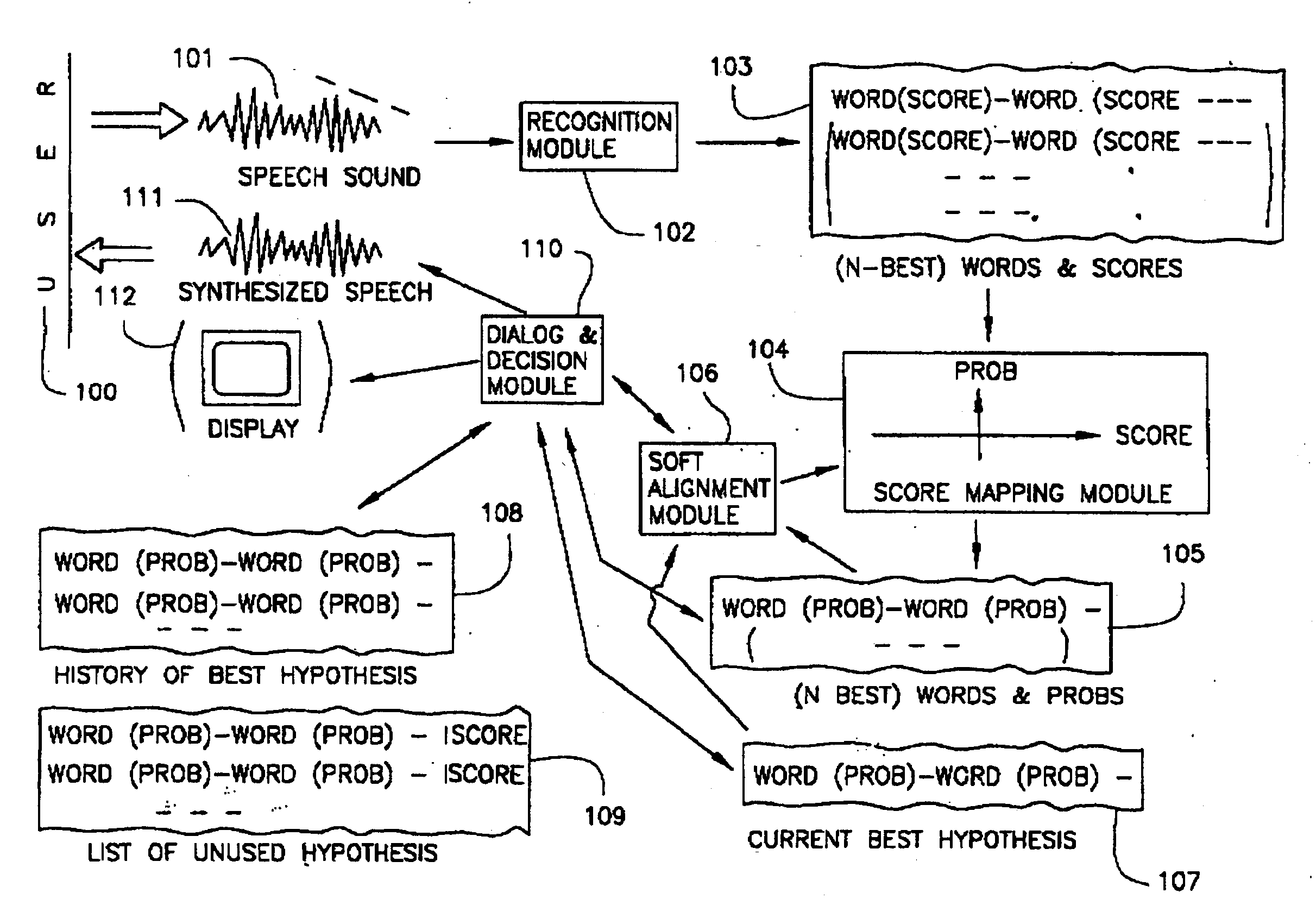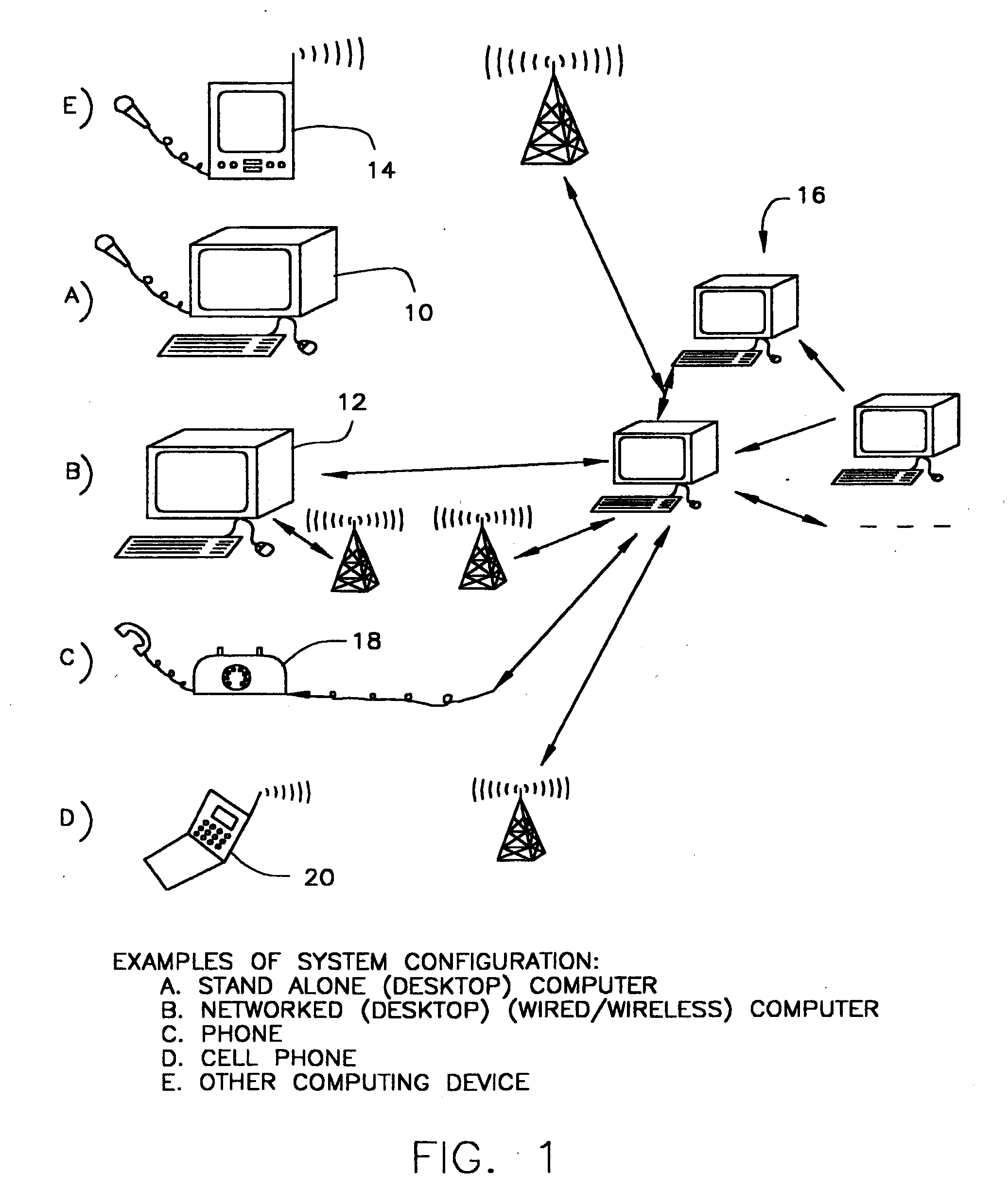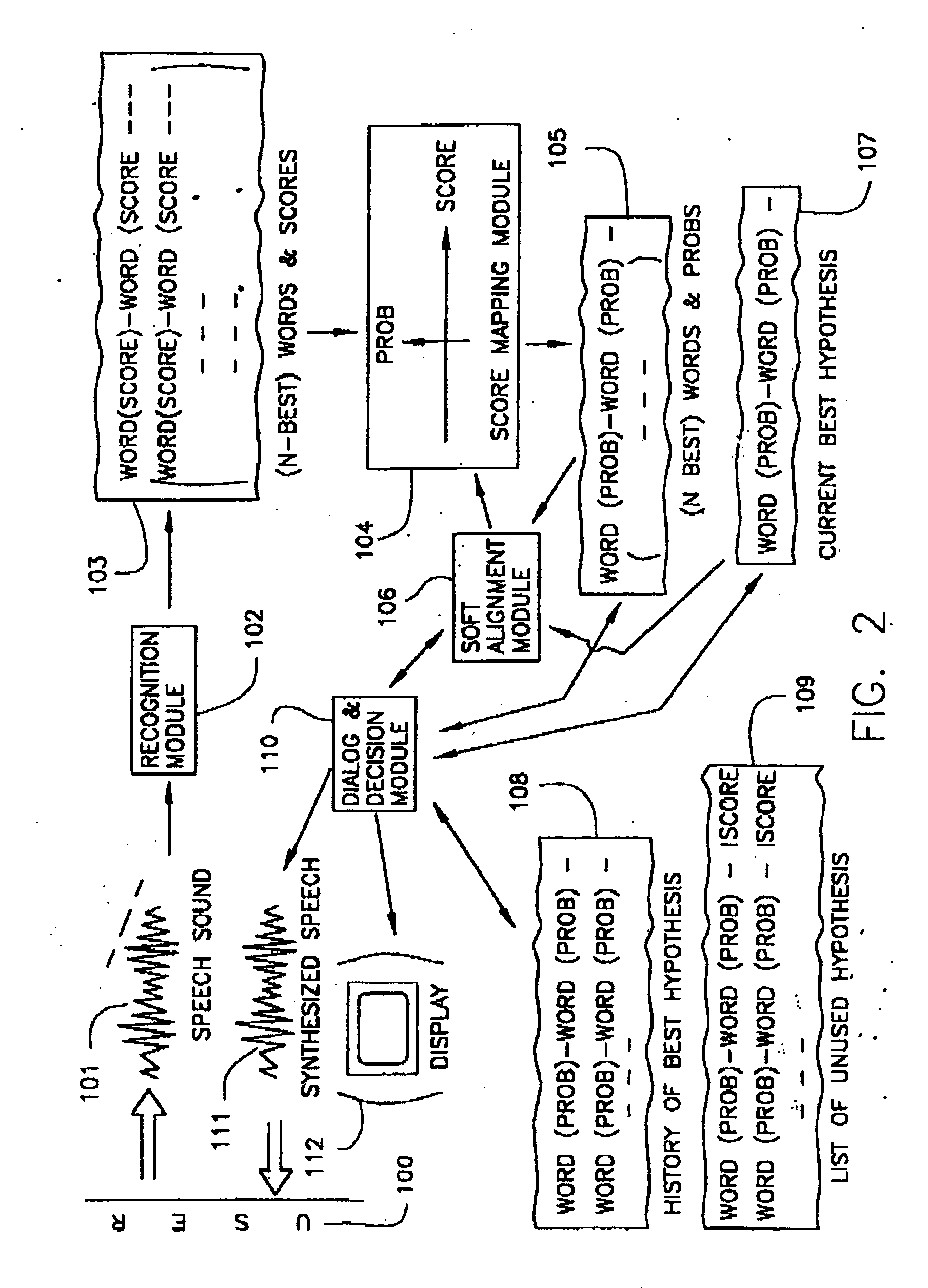Natural error handling in speech recognition
a speech recognition and error technology, applied in the field of speech recognition, can solve the problems of increasing the difficulty of speech recognition, unable to handle the task without error, and prone to recognition errors, so as to reduce the impact of speech recognition errors and improve the accuracy of speech recognition
- Summary
- Abstract
- Description
- Claims
- Application Information
AI Technical Summary
Benefits of technology
Problems solved by technology
Method used
Image
Examples
Embodiment Construction
[0018]Most conventional systems handle recognition errors as follows:
[0019]A. the user realizes that a recognition error occurred by examining the feedback provided by the system (through a visual display or via speech synthesis);
[0020]B. the user signals that an error occurred and optionally gives the location of the error; and
[0021]C. the system prompts the user to repeat the information that was incorrectly recognized.
[0022]In accordance with at least one presently preferred embodiment of the present invention, however, a more flexible and efficient interaction between the user and the system in the event of recognition errors is permitted via:
[0023]1. merging the above-listed steps B and C, thus allowing the user to signal the presence of one or more errors, the location of the error(s), and provide a correction all in one step;
[0024]2. allowing the use of context-sensitive natural correction commands (for example by saying “there is no ‘b’ in my name”, or “the last digit is fiv...
PUM
 Login to View More
Login to View More Abstract
Description
Claims
Application Information
 Login to View More
Login to View More - R&D
- Intellectual Property
- Life Sciences
- Materials
- Tech Scout
- Unparalleled Data Quality
- Higher Quality Content
- 60% Fewer Hallucinations
Browse by: Latest US Patents, China's latest patents, Technical Efficacy Thesaurus, Application Domain, Technology Topic, Popular Technical Reports.
© 2025 PatSnap. All rights reserved.Legal|Privacy policy|Modern Slavery Act Transparency Statement|Sitemap|About US| Contact US: help@patsnap.com



